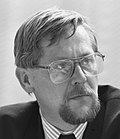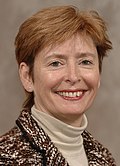| Mayor of Amsterdam | |
|---|---|
| Burgemeester van Amsterdam | |
| | |
| Seat | Herengracht 502 |
| Appointer | Gemeenteraad of Amsterdam |
| Term length | 6 years |
| Inaugural holder | Godevaert Wormbouts |
| Formation | 1343 |
| Website | https://www.amsterdam.nl/en/governance/the-college-of-mayor-and-alderpersons/ |
Below is a list of mayors of Amsterdam (Dutch: burgemeesters), capital of the Netherlands. The city had four burgomasters, serving four years. Since 1389 the mayors were elected on 1 February. [1] In the 17th and 18th century, a new mayor was elected by his colleagues (co-option), but his appointment had to be approved by the stadtholder. In 1824, it was decided only one person could govern the cities of The Hague and Amsterdam at a time. Mayors of Dutch municipalities are appointed by the municipal council after the acceptance of the King's Commissioner of the province. [2]
Contents
- 14th century
- 15th century
- 16th century
- 17th century
- 18th century
- 19th century
- Early 20th century
- List of mayors of Amsterdam since 1957
- See also
- References


















